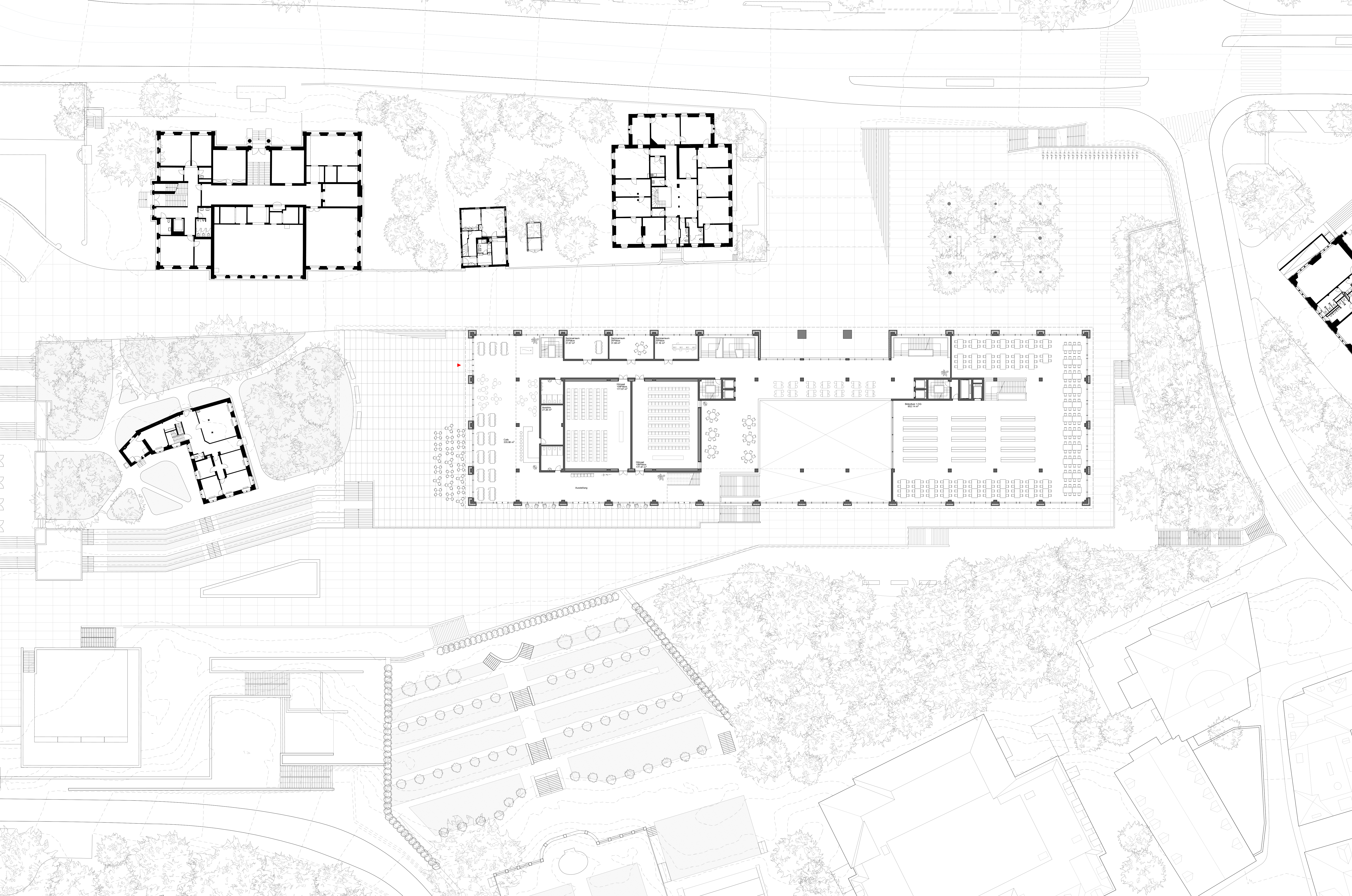HAUS DER GEISTESWISSENSCHAFTEN
Masterarbeit, FS18, ETH Zürich
Chair Prof. Markus Peter
The new House of the Humanities is located in the District University, next to the two most important buildings in the city of Zurich: the historic main building(HG) of the ETH and the University of Zurich. The two existing large volumes, each over 100 meters long, will be continued with the new project. As a result, the two historic buildings and the new one form a large-scale urban unit that gives Zurich a striking city skyline.
The new building rests on a foundation that mediates between the building and its surroundings. The complex and varied topography is a striking feature of the building site and can be understood as an extension, as well as a model for the interior. Thus, the new House of Humanities is well integrated into the topography in all four directions and further creates a new terrain in the substructure that opens up a spatial experience for users on different levels.
Almost all educational functions are located in the substructure: the indoor landscape - as a cascade system - brings all teaching activities together. On the platforms at different heights offer the students sufficient space for discussion and study. The circulating public spaces bring together indoor and outdoor activities. The cascade system finally leads to the 12-metre-high roof terrace, offering users not only a public outdoor space with a good view of Zurich's old town, but also plenty of daylight. The roof terrace continues the sequence of the baroque Rechberg Garden, the Mensa Terrace and the Café Terrace and is the linking point for the public interior (cascade) and the public exterior (terrace).
The structure-change storey at a height of 12 metres provides space for a variety of public event functions and extends the public area for the entire university area in an attractive way. All areas for the institutes are located above this storey.
The façade is clad with curtain-type ceramic panels, speaking a clear contemporary language. Through their size, the human scale returns to the façade. When the building is viewed from distance, the undulating components and the play of light and shadow give the building a soft, fabric-like character that balances the contrast caused by the huge building mass.







